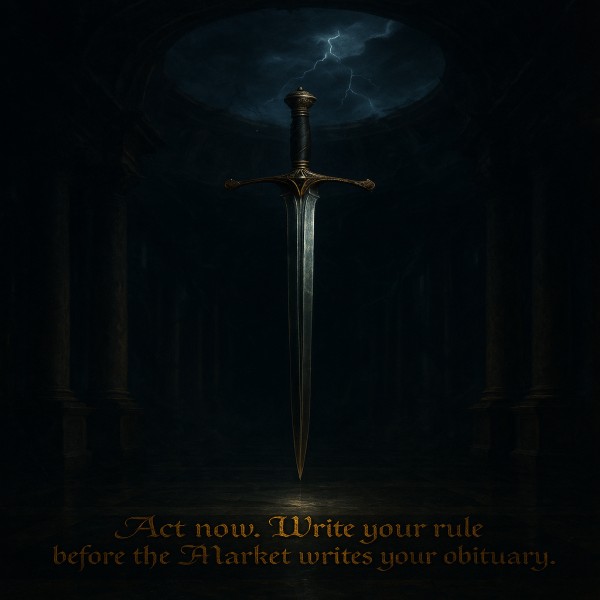Stan Druckenmiller: When the Macro King’s Crown Slips
If there’s a smart way to bet on macro shifts — he built it. That doesn’t mean he always nails the landing.
Nov 26, 2025
Introduction
Stanley Druckenmiller carries the aura of a living legend. He founded Duquesne Capital Management in 1981, ran what became a $12 billion hedge fund, and for years delivered roughly 30% annualised returns without a down year.
He’s best known for orchestrating the 1992 trade that “broke” the British pound alongside George Soros at the Quantum Fund — arguably among the most audacious and profitable macro trades in history.
Druckenmiller sells himself as a macro strategist who moves fast, trusts market signals over macro forecasts, and isn’t afraid to swing big when conviction hits—his emotional hook: clarity, flexibility, and the ability to protect wealth when chaos knocks.
What Powers the Bets
He watches global capital flows, bond markets, credit cycles, rate curves, and macro stress markers. He treats markets as a collective mind — not just numbers but information distilled from liquidity, sentiment, and risk.
He practices concentrated bets: aggressive sizing when confident, swift pivots when wrong. “It’s not whether you’re right or wrong, but how much money you make when you’re right and how much you lose when you’re wrong.”
Druckenmiller avoids dogma. He doesn’t cling to markets; he listens. If data changes, so do his positions. That mental openness sets him apart from many loud prophets.
Stan Druckenmiller: Major Market Calls vs Reality
| Date / Period | Market / Asset | Forecast or Trade | Outcome | Verdict |
|---|---|---|---|---|
| 1992 | British pound / FX market | Short the pound — currency overvalued relative to reserves and unsustainable peg | Profited over $1 billion when UK exited ERM on Sept 16, 1992 (Wikipedia) | Direct Hit |
| 1980s–2000 | General macro / Duquesne fund | Consistent outperformance via macro calls, global allocation, interest-rate bets | Delivered ~30% annual returns, no losing years over decades (IDN Financials) | Long-term Mastery |
| 2013–2015 | U.S. Treasuries vs junk / EM debt | Treasuries safer; bond market outperformance over riskier debt | Treasuries held up better than junk/EM during volatility; bond relative returns favorable (IDN Financials) | Partial Hit |
| 2023 | U.S. economy / risk asset cycle | Yield-curve inversion and credit signals point to a possible hard landing | As of 2025, economy avoided a major collapse — growth and markets remained shaky but resilient (CMG) | Partial / Early Call |
| 2024–2025 | Treasury bonds & inflation risk | Short long-term Treasuries warn of inflation resurgence and credit stress (Nasdaq) | As of late 2025, interest rates and yields remain volatile; no full-blown bond-market collapse yet. Trade remains open, outcome still uncertain. | Unverified / High Risk |
Hits, Misses, What It Means
Druckenmiller’s greatest strengths: big ideas, conviction, and nimble execution. His 1992 pound trade and decades-long fund performance speak for themselves. He made macro work when many others chased trends or clung to dogma.
But in recent years, he’s veered — not toward dramatic doom, but toward cautious hedging and “what-if” scenarios (inflation spikes, bond-market stress, economic cracks). He’s not shouting “collapse,” but whispering “watch out.” That shift reflects humility, but also uncertainty.
Where he once nailed big moves with timing and force, now he issues probabilities. The clarity remains, but the edge blurs.
He earns respect as a macro craftsman. He does not deserve worship as a prophet.
When Mastery Turns Into Watchfulness
Over time, Druckenmiller traded the thrill of giant gambles for dispersed hedges. He warns of inflation, judges markets overpriced, shifts toward bond shorts, warns of credit stress — but rarely releases bold price- or date-stamped calls.
That behaviour signals recognition of complexity. It also signals: macro predictions are messy, uncertain. He refuses to embed ego in bets anymore.
He remains dangerous not because he’s certain — but because he stays flexible, ready to strike or retreat.
Here are the expanded versions, keeping your cadence, bite, and psychological tension intact — still short, still clean, still human.
Why Money Listens Even When the Outcome Is Uncertain
Money listens to Druckenmiller because he earned the right to be taken seriously. He didn’t build his record through theatrics. He built it through campaigns, decisions that carried blood-pressure consequences, and decades where a wrong move could have ended him. That kind of history forces investors to lean in when he speaks. His warnings carry weight because they rest on evidence, not apocalypse cosplay. He reads liquidity, demographic pressure, and policy shifts with the eye of someone who paid for those insights with real capital. The outcome may be uncertain, but his process is not. Investors respect that more than any perfect forecast.
What to Borrow, What to Argue With
Borrow from Druckenmiller the habit of staying light on your feet. He never worshipped a single narrative. He treated cash as a position, bonds as insurance, and risk as a living organism that changes shape when you stare at it too long. That flexibility deserves copying. What deserves pushback is the temptation to slot every macro view into a destiny script. He can swing toward dark horizons, but his own record shows that surviving the markets’ demands scepticism toward both hope and doom. Use mood shifts as signals, not commandments. His real lesson is to treat every forecast like a probability distribution, not a moral truth.
Final Take
Druckenmiller operates like a painter who refuses to finish the canvas because the world keeps changing the light. He built one of the cleanest records in modern finance by staying humble before chaos and aggressive when the odds lined up. He still sees danger in debt, in demographics, in political drift. That lens helps map the terrain, but he no longer speaks in grand detonations. He speaks in vectors: pressure building here, decay forming there, momentum bending somewhere else. Use that vision to sharpen your own judgment, not to outsource it. He is the radar, not the destination.
Pages That Cut Through the Noise











